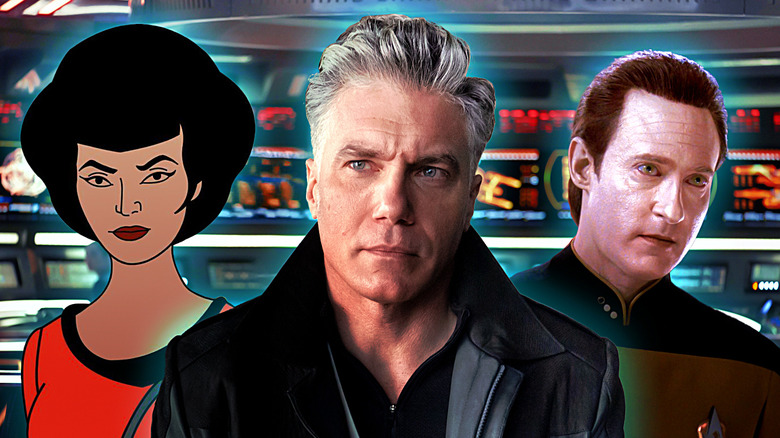
Static Media
As far as television science fiction goes, no show has had such a legacy or enduring influence on the genre and medium as "Star Trek." With nearly a dozen shows since the start of the franchise in 1966, "Star Trek" has effectively blended social commentary with hard sci-fi concepts and earned millions of fans worldwide. However, not every "Star Trek" series has come out the gate on its best foot, with many needing to find their overarching direction over time. These first impressions are made through pilot episodes, with networks deciding to commission the series through the strength of this inaugural episode.
The various "Star Trek" pilot episodes are a fascinating look back at the shows' history, and in some cases, they're far from how each respective series would gradually evolve. The ensemble casts of each show tend to find their characters quickly, but maybe not quite fully grown into them yet. And yet, there is still enough recognizable in every pilot that they are unmistakably "Star Trek" stories.
Here is every "Star Trek" pilot episode, ranked from worst to best.
Star Trek: Discovery, The Vulcan Hello
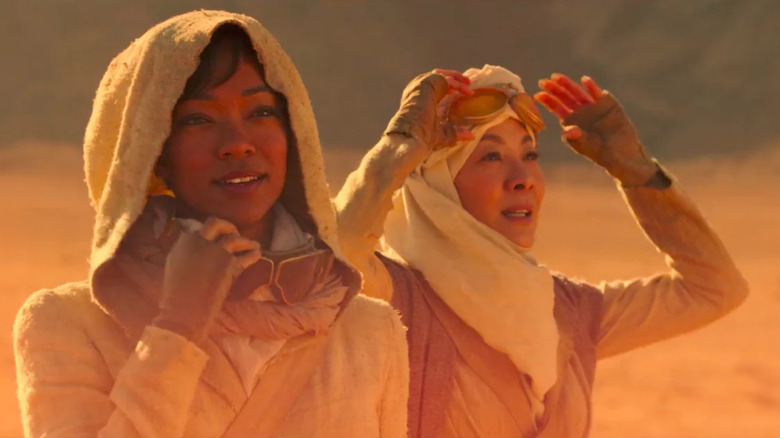
Paramount+
After an absence spanning over a decade, "Star Trek" returned to television in 2017 with "Star Trek: Discovery." Kicking off the streaming era for the franchise was "The Vulcan Hello," introducing audiences to the new show's protagonist Michael Burnham (Sonequa Martin-Green). Raised among the Vulcans by Sarek (James Frain), Burnham's first encounter with the Klingon Empire leads to them and the United Federation poised for all-out war. Despite the objections of Captain Philippa Georgiou (Michelle Yeoh), Burnham moves to strike first against the assembling Klingons in a disastrous effort to earn their respect.
Even the "Discovery" cast has since openly admitted that their series got off to an uneven start before eventually finding its own voice and direction. In its opening episode, despite a strong performance from Martin-Green, "Discovery" debuts a protagonist that viewers found initially difficult to root for. This, coupled by a radical redesign of the Klingons, started "Discovery" on an awkward note, with the Klingon redesign quietly abandoned by subsequent "Star Trek" series. "Discovery" completely revitalized the entire "Star Trek" franchise, but it would take some time for the show to actually find itself.
Star Trek: Lower Decks, Second Contact
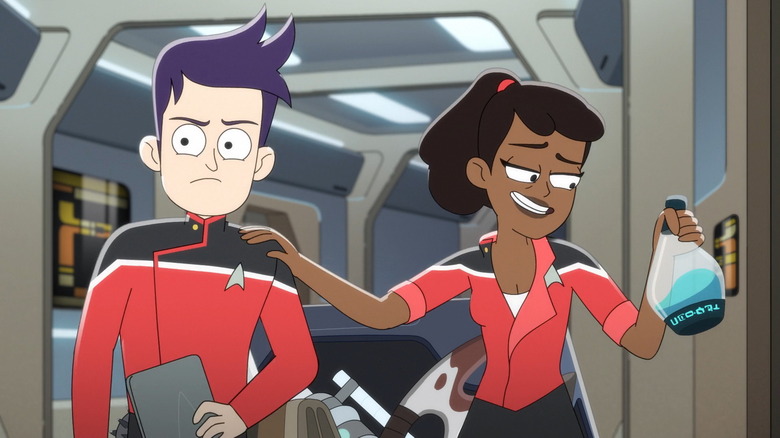
Paramount+
Though the animated series "Star Trek: Lower Decks" grew to become a well-regarded addition to Paramount+'s growing library of original "Star Trek" series, its start was shakier. The series premiere, "Second Contact," introduces the USS Cerritos, a smaller Starfleet vessel assigned with completing the Federation's more menial tasks. Newly assigned Ensign Brad Boimler (Jack Quaid) dreams of advancing up the officer ranks while his best friend Ensign Beckett Mariner (Tawny Newsome) flagrantly flouts rules and regulations. Joined by fellow ensigns D'Vana Tendi (Noël Wells) and Sam Rutherford (Eugene Cordero), the junior officers learn they're more important to Starfleet than they realize.
The polemical dynamic between Boimler and Mariner that forms much of the "Lower Decks" rapport is present in "Second Contact," but the show hasn't quite found its comedic voice yet. Even by the show's standards, the pilot is especially chaotic, running off the rails without giving viewers a chance to breathe and process. All the pieces for what makes "Lower Decks" so great are present, they just haven't quite coalesced just yet. "Lower Decks" significantly improved across its first season, running for five seasons overall, but it stumbled out the gate.
Star Trek: Enterprise, Broken Bow, Parts I & II
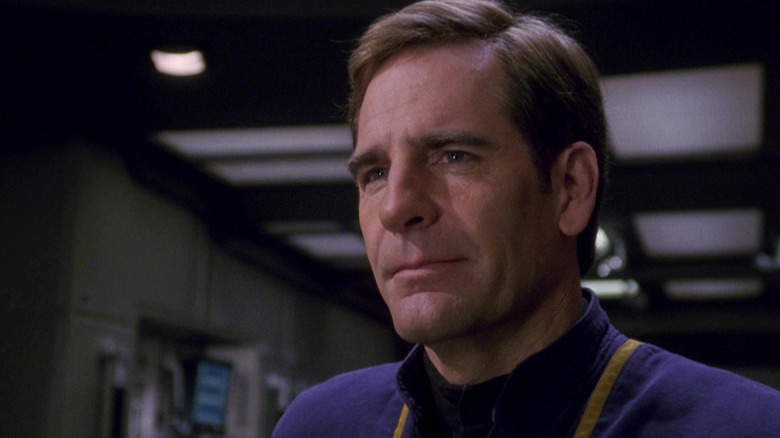
CBS Studios
The two-part premiere to "Star Trek: Enterprise," 2001's "Broken Bow," is among the franchise's most ambitious pilots. Set approximately a century before "Star Trek: The Original Series," the show has Captain Jonathan Archer (Scott Bakula) take command of the prototype starship, the Enterprise NX-01. Archer is tasked by Starfleet to escort an injured Klingon to his homeworld, despite objections from the Vulcans. This leads to the crew uncovering a conspiracy linked to what becomes known as the Temporal Cold War between different time-traveling factions.
"Enterprise" comes out the gate intent to set much of its overarching story into motion, perhaps too much for the sake of launching a new series. Not only is the crew of the NX-01 introduced, but so too is the state of the nascent Starfleet, with a time-bending mystery at its core. Though early "Enterprise" episodes are a bit rocky, the core dynamic between Archer and his crew are quickly established here, especially with his new Vulcan liaison T'Pol (Jolene Blalock). A bit more of a drab start to a "Star Trek" show, "Enterprise" feels like a back-to-basics approach when its pilot effectively connects.
Star Trek: The Original Series, The Cage
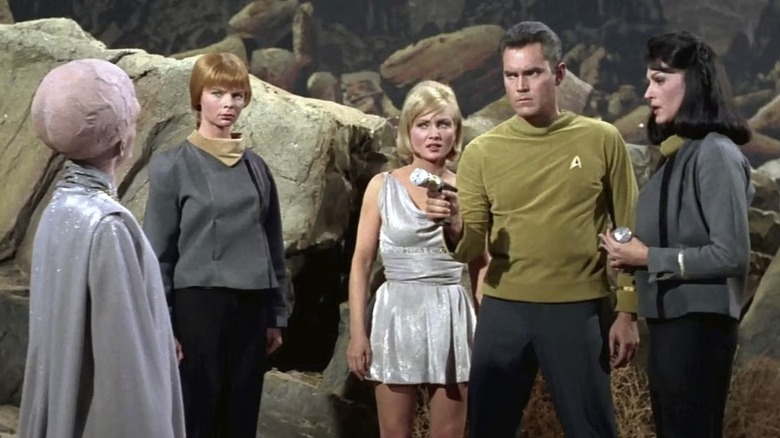
CBS Studios
In a rare distinction, "Star Trek: The Original Series" had two separate pilots produced before it was officially greenlit by NBC: "The Cage" and "Where No Man Has Gone Before." The first featured a completely different lead, with Jeffrey Hunter playing Captain Christopher Pike, commanding the USS Enterprise. Haunted by a recent violent mission, Pike and his team, including Spock (Leonard Nimoy), visit a planet populated by powerful telepaths. Kidnaped for their study, Pike experiences his greatest fears and desires through the telepathic visions he's subjected to.
As groundbreaking as "The Cage" was compared to anything else on American television at that time, you can see why NBC opted to produce another pilot. The episode is a bit rough around the edges, both in dialogue and production value, while its themes are admittedly more cerebral than '60s audiences probably would've liked. Hunter's Pike is one of the moodier "Star Trek" captains, and one can see why he quit the show rather than return to film its second pilot. However, "The Cage" does lay the groundwork for the more philosophical fare "Star Trek" would become known for once it figured out how to finally get on the air.
Star Trek: The Next Generation, Encounter at Farpoint, Parts I & II
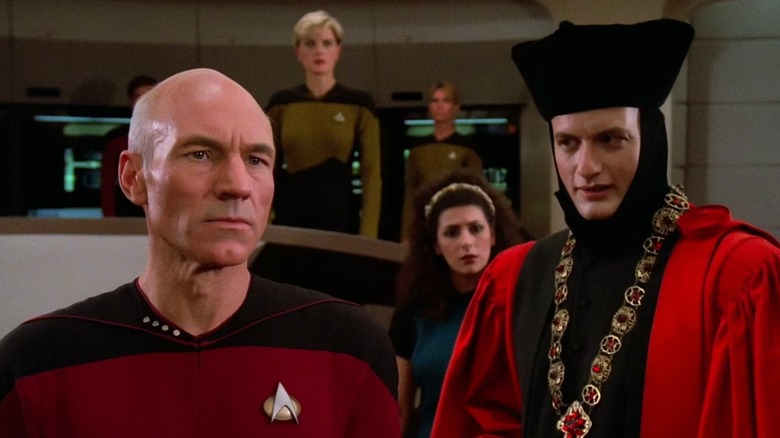
CBS Studios
After being unceremoniously sidelined from the franchise he created due to the mixed response to "Star Trek: The Motion Picture," Gene Roddenberry turned his focus back to television. Roddenberry created "Star Trek: The Next Generation," partially out of frustration as the movies continued without his involvement, introducing an all-new Enterprise cast headed by Captain Jean-Luc Picard (Patrick Stewart). The opening two-parter, "Encounter at Farpoint, Parts I & II," brings this crew together for a mystery at Farpoint Station while being observed by the omnipotent Q (John de Lancie).
There's a dream-like quality to the first "TNG" episode, with its use of cinematography and lighting, especially for scenes set in Q's courtroom. This helps distinguish the episode from the rest of what is largely a weak season overall, making "Encounter at Farpoint" a standout. The pilot never quite justifies its doubled runtime, with plenty of self-indulgent moments, like Riker (Jonathan Frakes) meeting Data (Brent Spiner) on the Holodeck. Still, the episode lays a firm foundation for its ensemble cast as "TNG" eventually grew to become the most celebrated "Star Trek" series.
Star Trek: Prodigy, Lost and Found
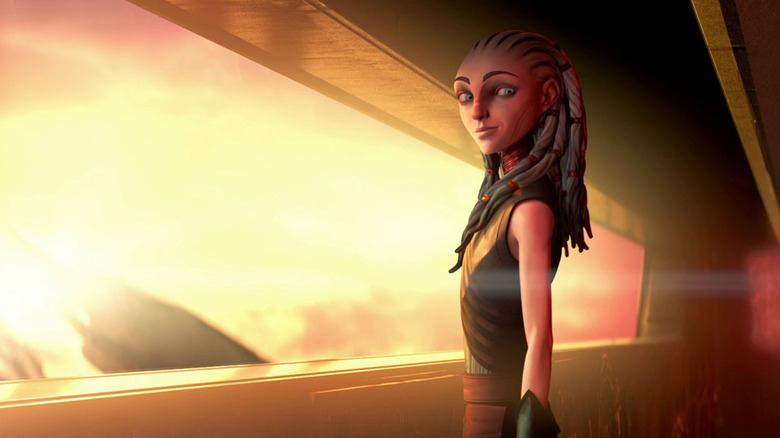
Netflix
Originally launching on Paramount+ in 2021 before moving to Netflix for its second season, the animated series "Star Trek: Prodigy" was positioned to introduce "Star Trek" to younger audiences. The show's two-part pilot episode, "Lost and Found," introduced the harsh mining world of Tars Lamora, in the Delta Quadrant, far away from Starfleet jurisdiction. A group of young aliens led by precocious Dal (Brett Gray), escape their cruel overlords after discovering and reactivating the crashed USS Protostar. As the makeshift crew learns how to operate their starship, they learn about the Federation from an advanced hologram program of Kathryn Janeway (Kate Mulgrew).
"Prodigy" hits the ground running, with "Lost and Found" easily being the most action-packed "Star Trek" pilot to date. This frenetic sensibility makes "Prodigy" feel more removed from the wider "Star Trek" franchise, by design given its premise, but that detachment is still jarring. It wouldn't be until "Prodigy" took the time to slow down and breathe that it really connected with fans in a deeper way. Having said that, "Lost and Found" catches its viewers' attention right away and rarely loosens its grip as it presents a bold vision of "Star Trek."
Star Trek: Deep Space Nine, Emissary, Parts I & II
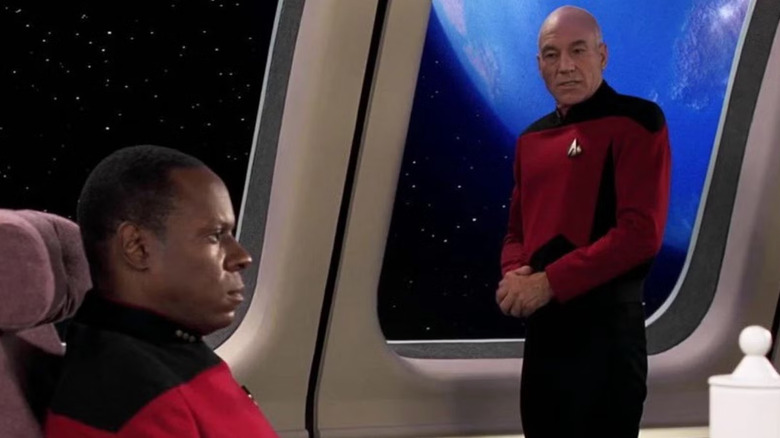
CBS Studios
The Battle of Wolf 359, while pivotal, takes place off-screen in "The Next Generation," but its spinoff series "Star Trek: Deep Space Nine" opens right in the thick of it. After losing his wife to the Borg, led by an assimilated Picard, Commander Benjamin Sisko (Avery Brooks) is assigned to oversee space station DS9. The station is of vital strategic importance, near the planet Bajor, which was recently liberated from the Cardassian Union. The station's significance grows considerably when a wormhole to the Gamma Quadrant opens, with ephemeral, non-corporeal beings emerging from it.
The two-part pilot, "Emissary," throws a lot at audiences, even with its doubled runtime, but fortunately, a lot of it sticks. Many of the show's starting main ensemble leave great first impressions, including its memorable recurring villain Gul Dukat (Marc Alaimo). However, the more esoteric elements of "DS9," involving the wormhole entities, was always a weaker aspect of the show and similarly are strange and ineffective here. "DS9" stands as one of the most distinct "Star Trek" series and that's clear right from its trauma-fueled premiere.
Star Trek: The Animated Series, Beyond the Farthest Star
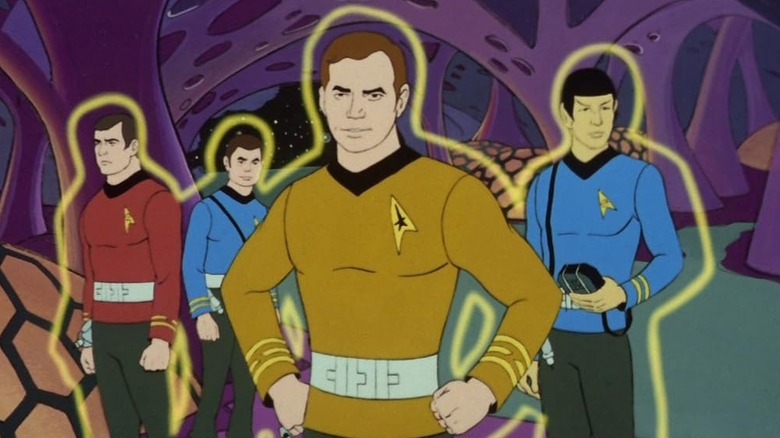
CBS Studios
Four years after "The Original Series" broadcast its finale, the franchise returned in 1973 on Saturday mornings as "Star Trek: The Animated Series." Featuring the majority of the main cast and several writers from "TOS," the cartoon continued the adventures of the Enterprise and its fan-favorite crew. "TAS" began with the episode "Beyond the Farthest Star," with the Enterprise investigating a hypergravity well. This leads to the ship being possessed by a sinister entity looking to escape its gravity prison while placing the crew in danger.
While the animation itself is definitely of its era, "Beyond the Farthest Star" is a solidly crafted, standalone sci-fi story with Kirk (William Shatner) and his crew. A big part of that pedigree is the episode being written by Samuel A. Peeples, who also wrote the successful "TOS" pilot "Where No Man Has Gone Before." Each of the returning actors slide back into their familiar roles effortlessly, if a little more sedate than they had been in live-action. "Beyond the Farthest Star" proved "Star Trek" could work in animation, and work well, giving "TAS" a strong start.
Star Trek: Picard, Remembrance
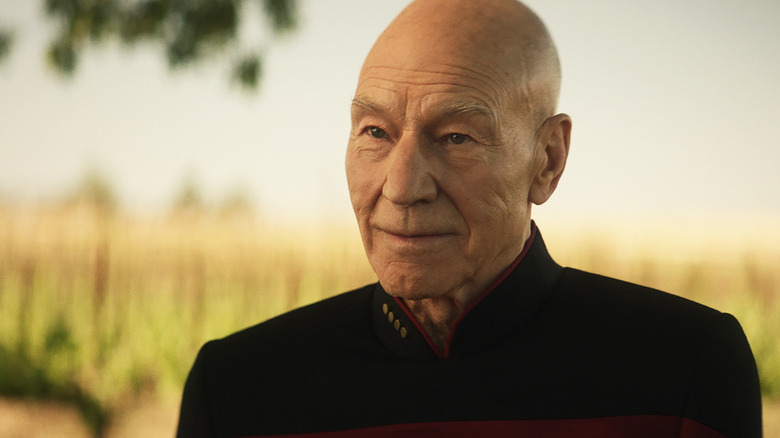
Paramount+
After a tepid farewell to the franchise with 2002's "Star Trek: Nemesis," Patrick Stewart returned to the role that made him a household name with "Star Trek: Picard." The show's pilot episode, "Remembrance," reintroduces a retired and frustrated Picard, still bitter by Starfleet's refusal to aid Romulan refugees and ban synthetic life. Picard's seclusion is upended by the sudden arrival of Dahj (Isa Briones), a synthetic woman targeted by Romulan assassins. Back in harm's way and learning of Dahj's connection to Data, Picard sets out on a new adventure, this time without Starfleet's backing.
For as turgidly paced as the first season of "Picard" is overall, its inaugural episode is a welcome return for Stewart's Jean-Luc Picard. The episode wisely keeps the focus on its titular protagonist, with Stewart effortlessly reprising his fan-favorite role like reconnecting with an old friend. This is clear right from the series' very first scene, beginning with a private poker game between Picard and Data, feeling like a natural extension of "TNG." It would take two seasons for "Picard" to become the show that fans had hoped for, but there's an inherent warmth to its opening episode that continues to hold up.
Star Trek: Voyager, Caretaker, Parts I & II
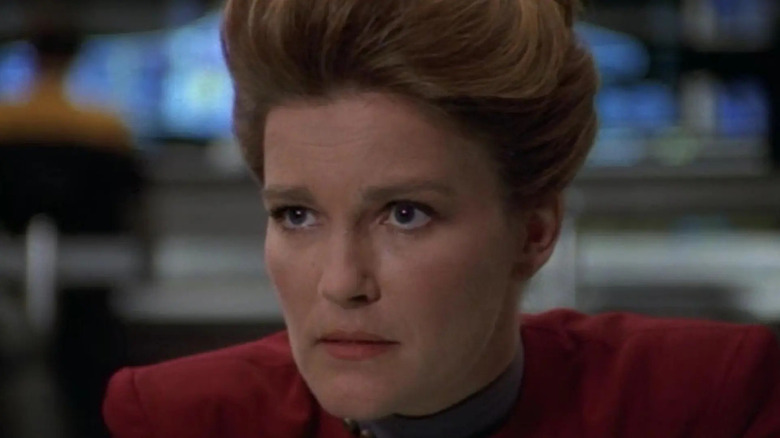
CBS Studios
Just as "Deep Space Nine" spun out of the fires of war in "The Next Generation," "Star Trek: Voyager" emerges from a growing conflict in "DS9." The "Voyager" two-part premiere, "Caretaker," has the USS Voyager scour a volatile nebula for the Maquis, a paramilitary organization opposing the Cardassian Union against Federation diplomatic policy. The instability in the nebula displaces Voyager and a badly damaged Maquis vessel to the Delta Quadrant, over 70,000 lightyears from Federation space. Adding the Maquis crew to augment their own, Voyager must navigate uncharted space as they begin the perilous journey back home.
Compared to the franchise's other two-part pilots, "Voyager" maintains a steadier focus and greater sense of dangerous stakes for its crew. Kate Mulgrew, who came in replacing original intended lead actor Geneviève Bujold, projects a commanding authority as Captain Kathryn Janeway. This complements the misfit energy that the Voyager crew possesses, even before they accept the Maquis officers into their ranks. "Voyager" had an inherent sense of jeopardy baked into its premise and the show's pilot gives this intriguing direction to "Star Trek" a proper liftoff.
Star Trek: The Original Series, Where No Man Has Gone Before
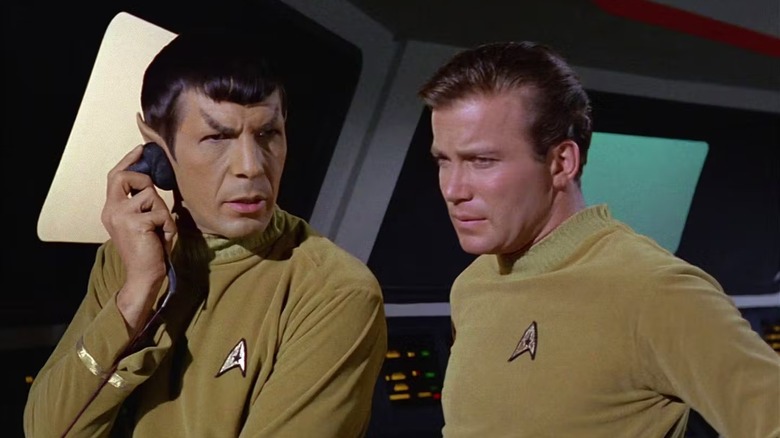
CBS Studios
Though NBC didn't commission "Star Trek" based on its first pilot, "The Cage," it saw enough potential to produce a second pilot, "Where No Man Has Gone Before." This pilot introduced William Shatner as Captain James Kirk and his Enterprise crew as they encountered a strange energy barrier in space. After coming into contact with the barrier, two crew members, including Kirk's friend Gary Mitchell (Gary Lockwood) gain godlike powers. Kirk is forced to confront Mitchell as the latter's burgeoning godhood turns him into a murderous madman.
"Where No Man Has Gone Before" is the much stronger pilot compared to "The Cage," downplaying meditative themes for something more action-oriented. The dynamic of Kirk and Spock (Leonard Nimoy), though still visibly in its early stages, already serves as a character-driven core and driving force for the episode. The balance between sci-fi existentialism and adventure is better achieved here, with significant emotional weight as Kirk watches what's become of his friend and what he must do accordingly. Interestingly, the network chose to air "Where No Man Has Gone Before" later in the season, preferring the generic monster-of-the-week episode "The Man Trap" to premiere the series instead.
Star Trek: Strange New Worlds, Strange New Worlds
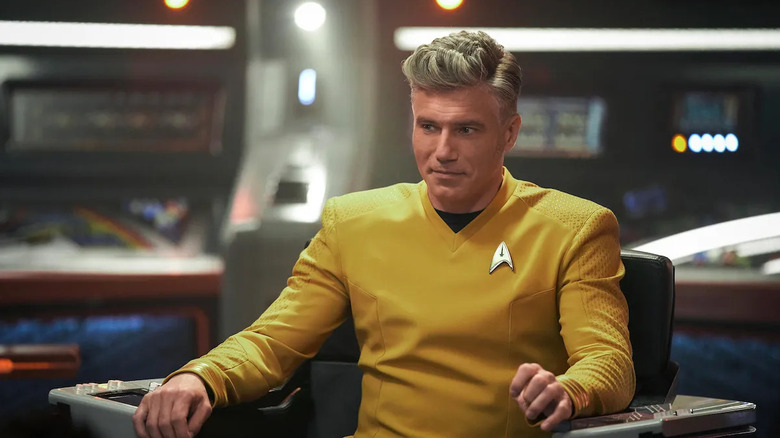
Paramount+
After their prominent roles in the second season of "Discovery," Christopher Pike (Anson Mount) and the crew of the Enterprise launched their own series, "Star Trek: Strange New Worlds." The pilot episode, which shares the name of the series, has Pike return to active duty in Starfleet following the Enterprise's repairs. Pike's first mission back involves him rescuing his first officer, Una Chin-Riley (Rebecca Romijn) after she went missing during a first contact mission. With the world that captured Chin-Riley on the brink of war, Pike implores the alien civilization to learn from humanity's own mistakes.
While "Star Trek" has had great moments and stories since its return in 2017, "Strange New Worlds feels like the shot in the arm the franchise needed. That's clear right from its opening episode, with its sweeping cinematography and clear real-world parallels in its storytelling. Mount and his senior officers are joined by a fantastic ensemble, many with strong ties to the wider "Star Trek" canon. For both new viewers trying to find a jumping-on point to the franchise and longtime fans, "Strange New Worlds" brings the franchise back to its viable roots.



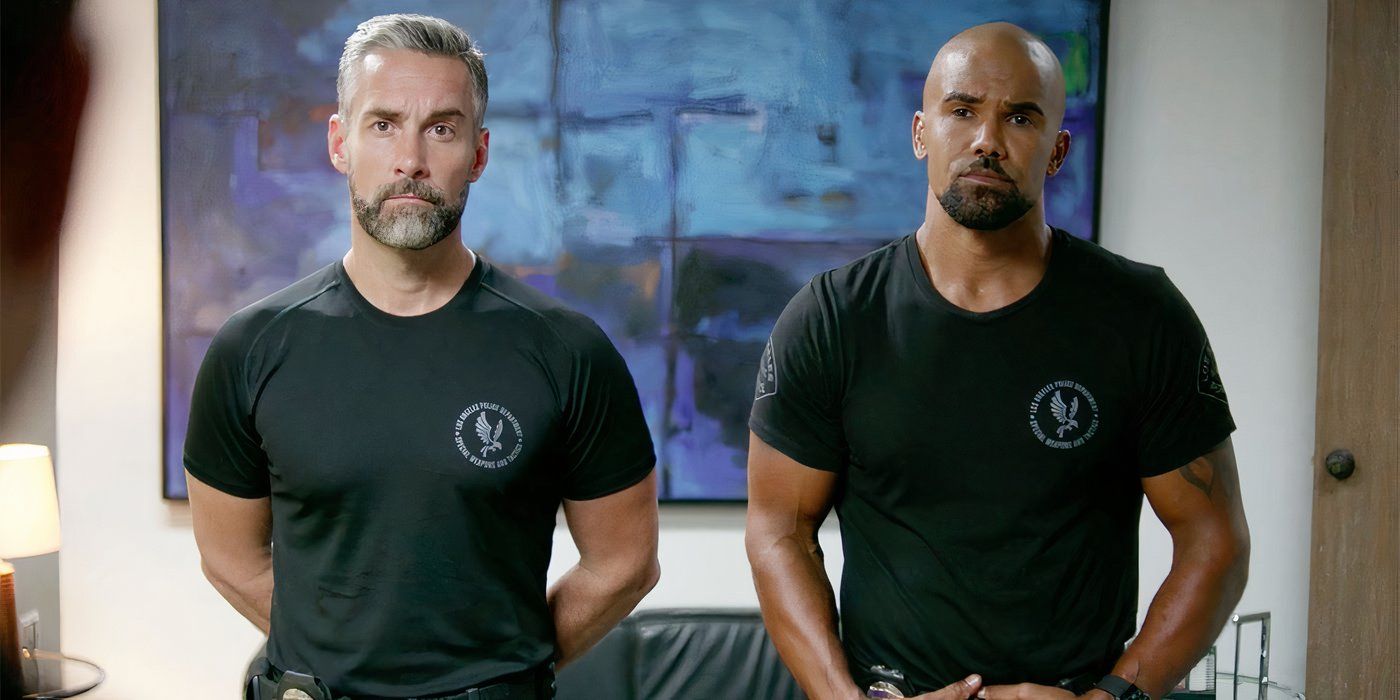





 English (US) ·
English (US) ·